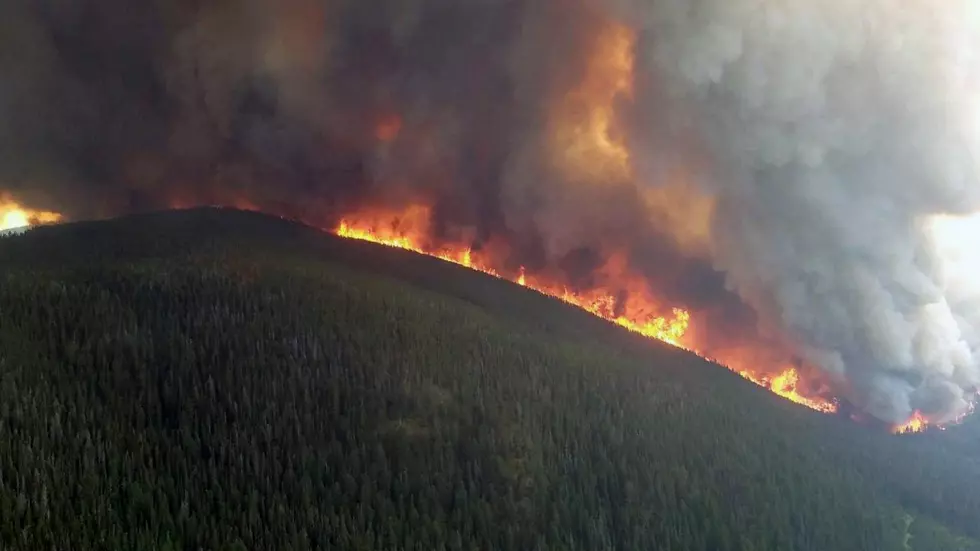
USDA chief calls for overhaul of forest management in western states
(CN) — The man who oversees the federal government’s wildland firefighting forces stood in the burn scar of the largest forest fire in California's recorded history Wednesday and acknowledged the federal government needs to do more.
Agriculture Secretary Tom Vilsack stood flanked by California Gov. Gavin Newsom and hills made bare by the 1 million-acre August Complex fire in 2020, and said the federal government needs to do a better job of forest management — a rare admission in an era where climate change receives the brunt of the blame for the spate of wildfires.
“We have tried to do this job on the cheap,” Vilsack said. “We have tried to get by with a little forest management here, a little fire suppression here, but the reality is this has caught up to us.”
Vilsack said the federal government, beginning with the bipartisan $1.2 billion infrastructure package winding its way through a deeply gridlocked Congress, will invest more taxpayer dollars into increased firefighting forces, better forest management and more restoration work.
“We need more boots on the ground,” Vilsack said. “We need to do more forest management to reduce the risk of fire.”
The statement is notable for how it aligns with the views of President Donald Trump, who previously rejected notions that worsening wildfire seasons were a result of climate change and blamed poor forest management instead. Trump, however, also talked about raking the forest and other odd prescriptions for reducing fire.
And Vilsack did not push back when Newsom said that a changing climate has produced prolonged droughts, more extreme heat and a reduction in precipitation that has rendered forests throughout the American West into tinderboxes awaiting a spark.
“In California, as in other western states, we continue to experience extreme heat, heat domes and droughts that make for very perilous wildfire conditions,” Newsom said.
The news conference with Vilsack came a couple of days after Newsom joined seven other governors from the West to discuss the problem of wildfires with President Joe Biden.
During the teleconference with Biden, Newsom talked about how the majority of large wildfires actually begin on land managed by the U.S. Forest Service, a point he brought up during the debate with Trump as well over forest management practices.
Newsom also criticized the federal government for its “Let it Burn” policy, wherein the Forest Service monitors rather than suppresses fires that occur naturally in remote areas. Newsom said this policy allows small fires to turn into massive conflagrations which strain state resources and endanger communities in remote portions of the state.
Newsom used the recently ignited Tamarack Fire, which he toured with Nevada Governor Steve Sisolak last week, as an example.
“There is a culture that too often is 'wait and see,’” Newsom told Biden on Saturday. “We can't afford that any longer. This was a federal fire and they waited and they saw as the fire took off because they didn't put enough initial assets."
The Tamarack Fire began after a lightning strike in the Mokelumne Wilderness started a small brush fire near the mountain town of Markleeville, about 30 miles south of Lake Tahoe. Forest Service firefighters initially monitored the fire, but by the time it grew to a point where they believed suppression was necessary it was out of control.
Presently, the fire has scorched 68,000 acres and is about 85% contained.
But others disagree with Newsom and argue fire suppression contributes to the problem of high-intensity wildfires rather than help.
In natural conditions, prior to the arrival of European settlers to the Sierra Nevada, the forest experienced frequent bouts of low-intensity fire. But since people have suppressed fire in the forest, overgrowth of trees has occurred so that — though fewer fires occur overall — when fires do spark they do so with a higher degree of intensity in terms of heat and reach.
Regardless, the Forest Service responded to Newsom’s criticism and requests by issuing an edict that fire suppression should take priority over monitoring.
U.S. Forest Service chief Randy Moore said the agency will cease in the near term managing fire for “resource benefit.” In other words, the agency will prioritize suppression and protecting communities over ecological considerations.
“The 2021 fire year is different from any before,” Moore wrote in a letter Monday.
There are 96 active major fires that have burned about 1.8 million acres in 14 states, according to the National Interagency Fire Center.
One of particular concern is the Golden State's largest so far in 2021, the 274,000-acre Dixie Fire burning in Plumas and Butte counties in the northeastern part of the state. The blaze threatens about 12,000 structures but so far only a dozen have been destroyed.
The National Weather Service issued a red-flag warning for the region Wednesday, with hot, dry winds expected to pummel Northern California and much of Nevada through Thursday.
